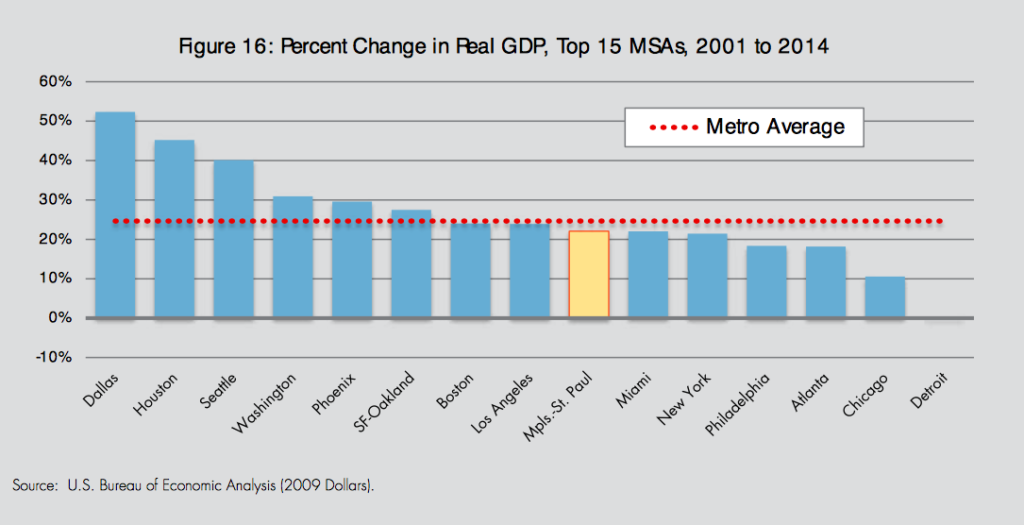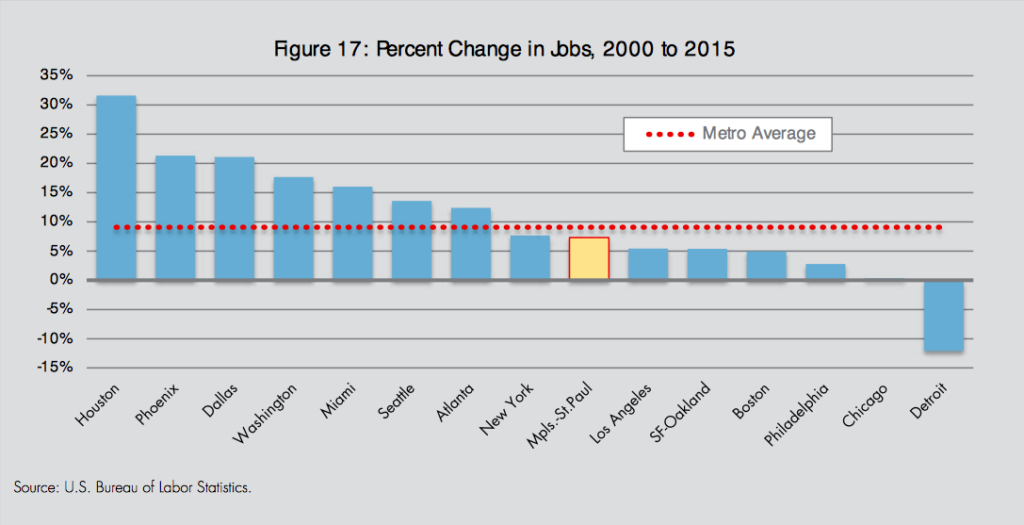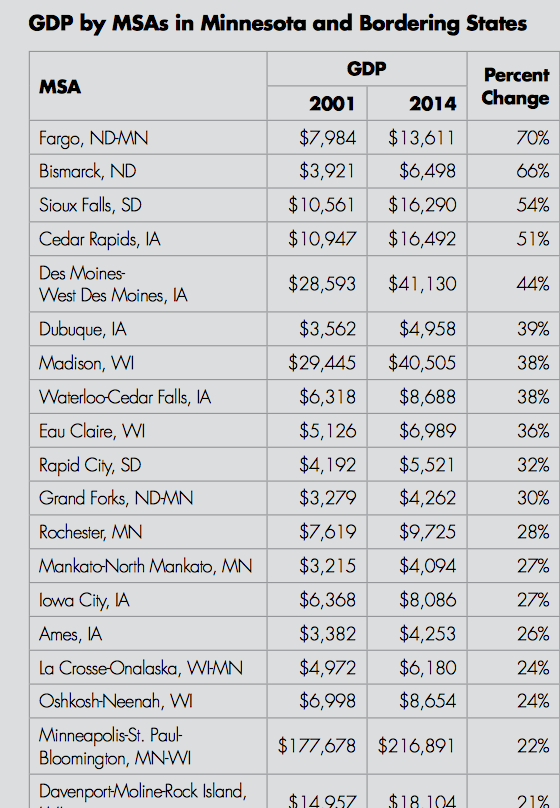The Twin Cities Are Falling Behind, and It Isn’t Just Population
Today the Star Tribune headlines: “Twin Cities population growth lags other major U.S. cities.” Based on just-released Census Bureau data, the article says:
The Twin Cities metro is growing slower than other major U.S. cities, particularly areas like Denver and Seattle, new U.S. Census population estimates show.
The metro area has grown about 6 percent since 2010 — adding 200,000 new people — placing it 17th for growth among the country’s 25 largest cities.
This is a function of the fact that more people leave Minnesota for other states than move here from other states. If it weren’t for large-scale international immigration, principally from Somalia, Twin Cities population growth would be far lower.
The Strib says, quoting Michael Langley of Greater MSP:
The metro area’s gross domestic product is rising at a healthy pace, he said, and ranks higher than our population relative to other metro areas.
Unfortunately, the data do not support this optimistic assessment. In fact, during the current century the Twin Cities have been below average in both GDP growth and job growth, compared with other major metropolitan areas. This topic is covered extensively in the Kennedy report, which the Center released last August.
The Twin Cities are performing below average in GDP growth. Click to enlarge:
And also in job growth:
The Twin Cities have the largest GDP of any metropolitan area in Minnesota and the surrounding states of Wisconsin, Iowa, North Dakota and South Dakota. But on a percentage basis, Twin Cities economic growth has lagged behind numerous other metropolitan statistical areas in the Upper Midwest, ranking just 18th between 2001 and 2014:
The Twin Cities, like the state of Minnesota as a whole, have considerable advantages over most other urban areas. But the reality is that the strong economic performance of decades past has not continued in the early years of the 21st century. Minnesota’s liberal policies have impeded economic growth and job development across the entire state, and the Twin Cities have not been exempt. Complacency is our greatest enemy. We need less happy talk from our media and our civic leaders, and, instead, a more realistic assessment of where our state, and the Twin Cities, actually stand with respect to our competitors.


